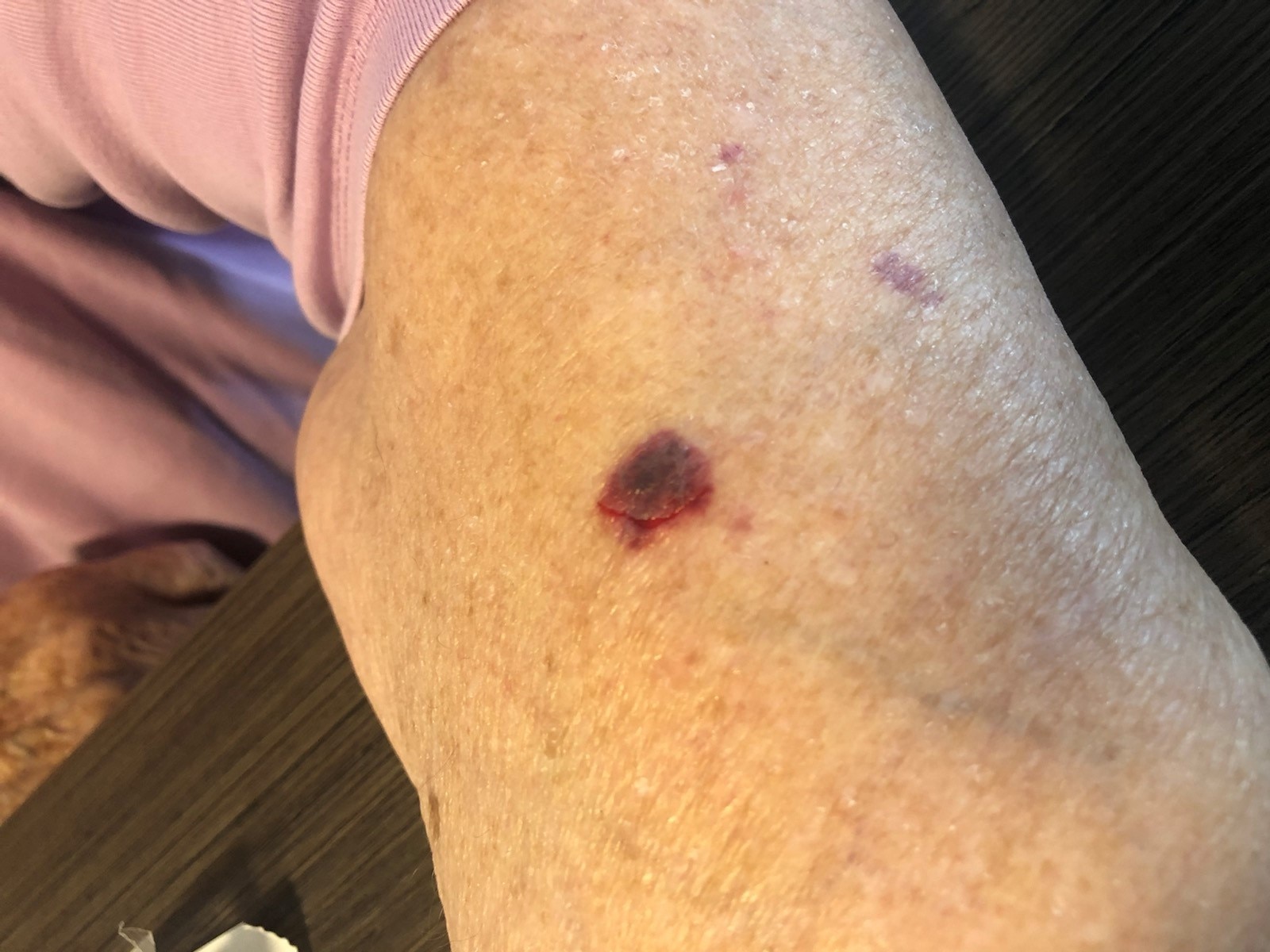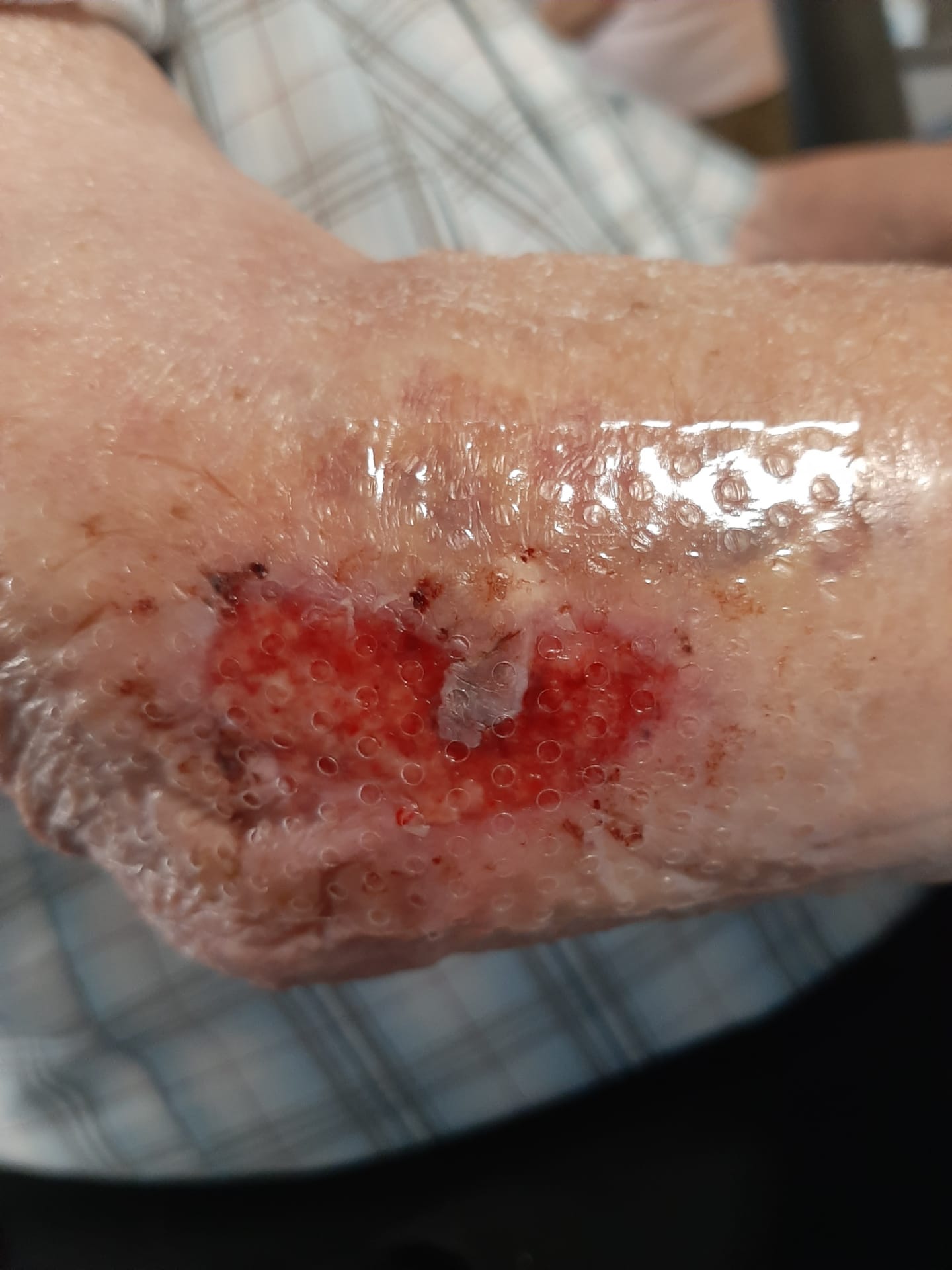Understanding skin tears
In this section, you’ll learn:
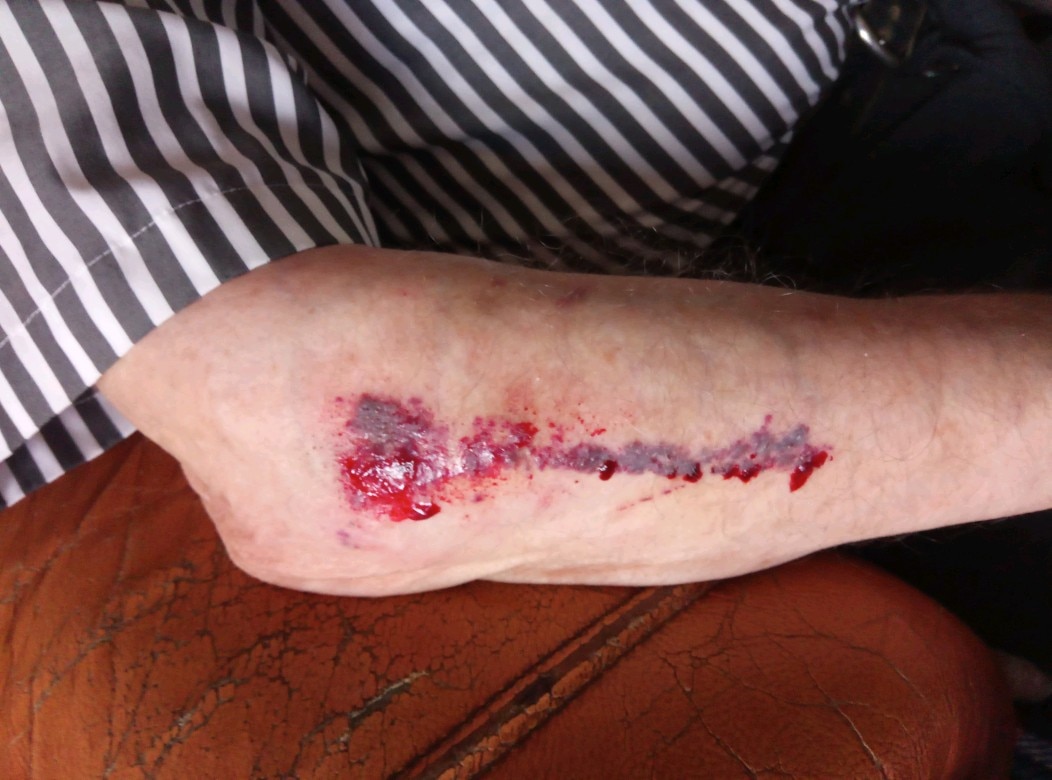
What is a skin tear?
A skin tear is a traumatic wound that is caused by a mechanical force. The mechanical force could be shear or friction, or it could be the result of removing an adherent dressing.1
Skin tears can lead to partial or full separation of the skin’s outer layers (epidermis and dermis). They can also lead to a separation of both the epidermis and the dermis from the underlying structures (a full-thickness wound). The severity of a skin tear varies, depending on the depth of the wound. However, skin tears do not extend through the subcutaneous layer of the skin.1
They can occur on any part of the body, but are most common on the hands, arms and legs.1
Did you know?
While some might refer to skin tears as a “laceration”, a skin tear is a specific injury that is very different from a general laceration. A laceration involves soft tissue tearing.1
The three types of skin tears
There are three types of skin tears. The type of skin tear is determined by how severe the “skin flap” loss is.2 The “flap” is the part of the skin (either the epidermis or dermis) that is separated from its original place by shear, friction and/or blunt force.2
Table 1: The three types of skin tears1
|
Type1 |
Description1 |
Example1 |
|
Type 1: No skin loss |
A Type 1 skin tear is a linear or flap tear. With this wound, you can reposition the skin flap to cover the wound bed. |
|
|
Type 2: Partial flap loss |
In a Type 2 skin tear, the skin is partly missing. This means you can’t reposition the skin flap to cover the entire wound bed. |
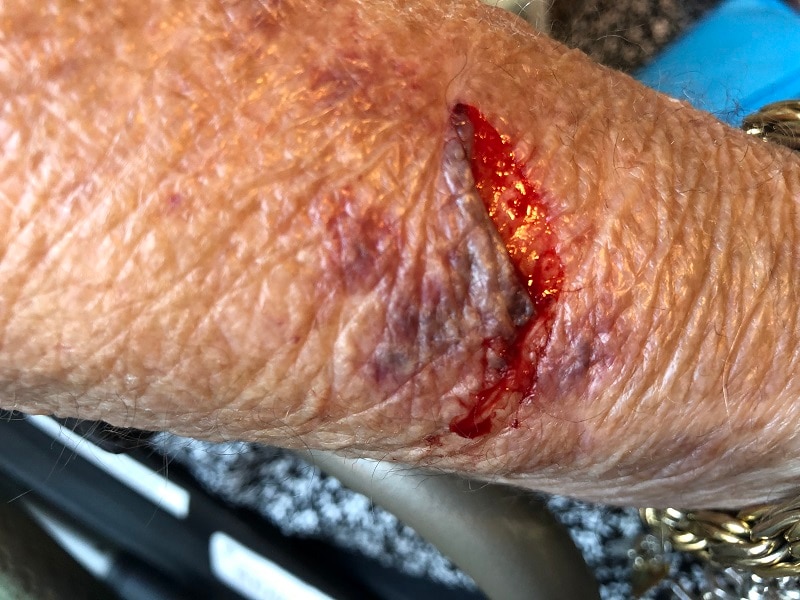 |
|
Type 3: Total flap loss |
In a Type 3 skin tear, the skin is completely missing. You can see the entire wound bed. |
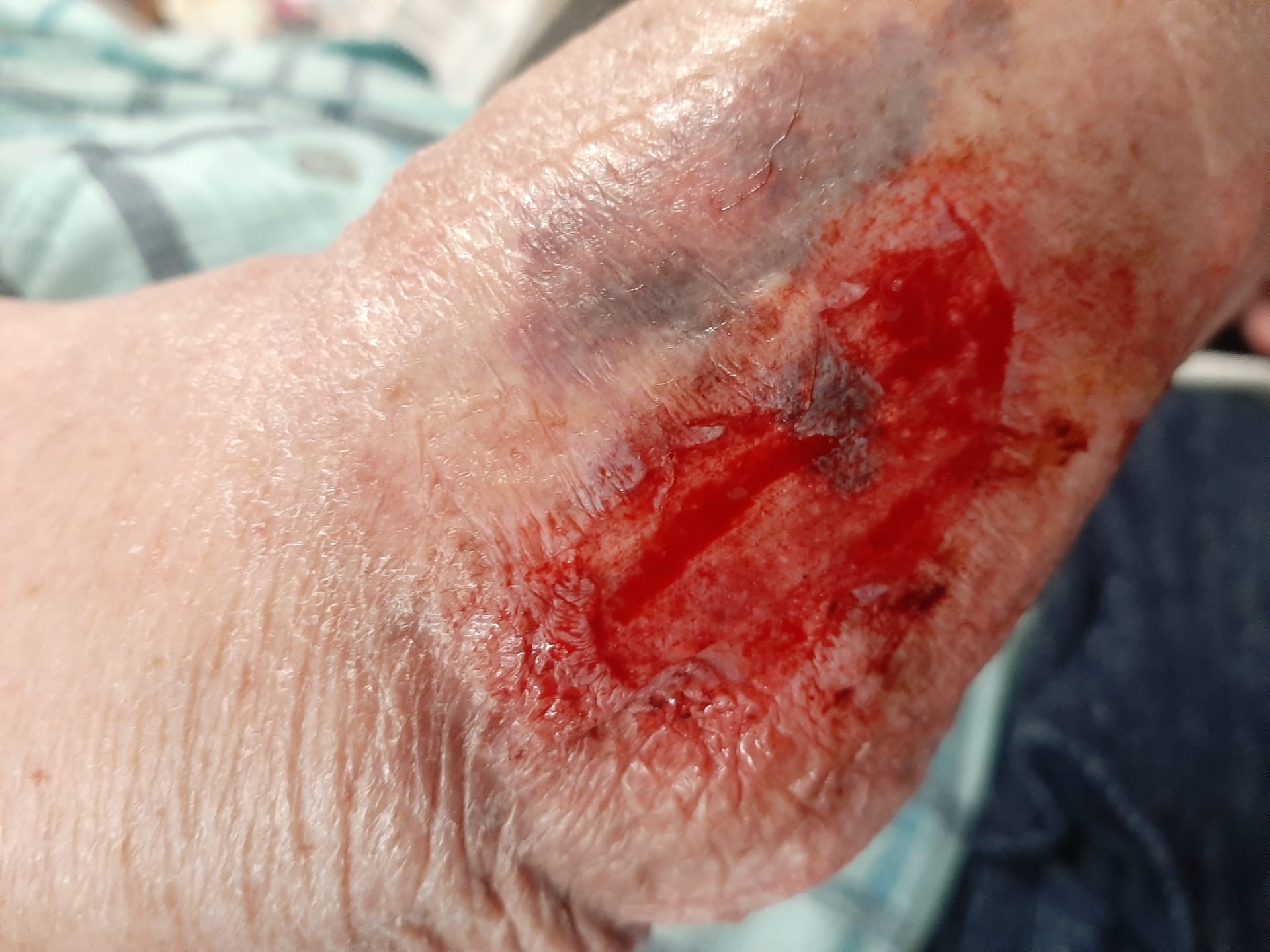 |
Who is at risk of getting a skin tear?
Our skin is the body’s first line of defense. It acts as a protective barrier and prevents damage to our internal tissues and organs. However, if our skin becomes frail or fragile, it’s more likely to be damaged. This increases the risk of skin tears, as less force is needed to cause a traumatic injury.2
While skin tears can happen in a variety of patients, the elderly population is, particularly at risk. As we age, our skin becomes more fragile. The skin’s ability to heal itself slows down, which can make it even more vulnerable to skin tears.2 (See Figure 1 for more information)
If an elderly patient needs help to carry out daily tasks, such as moving around or washing, this can increase the risk of skin tears. Additionally, elderly patients who have other illnesses, are undergoing certain medical treatments (e.g. chemotherapy) or are on certain medications (e.g. steroids), can have an even higher risk of developing skin tears.1
Figure 1: How our skin changes as we age1
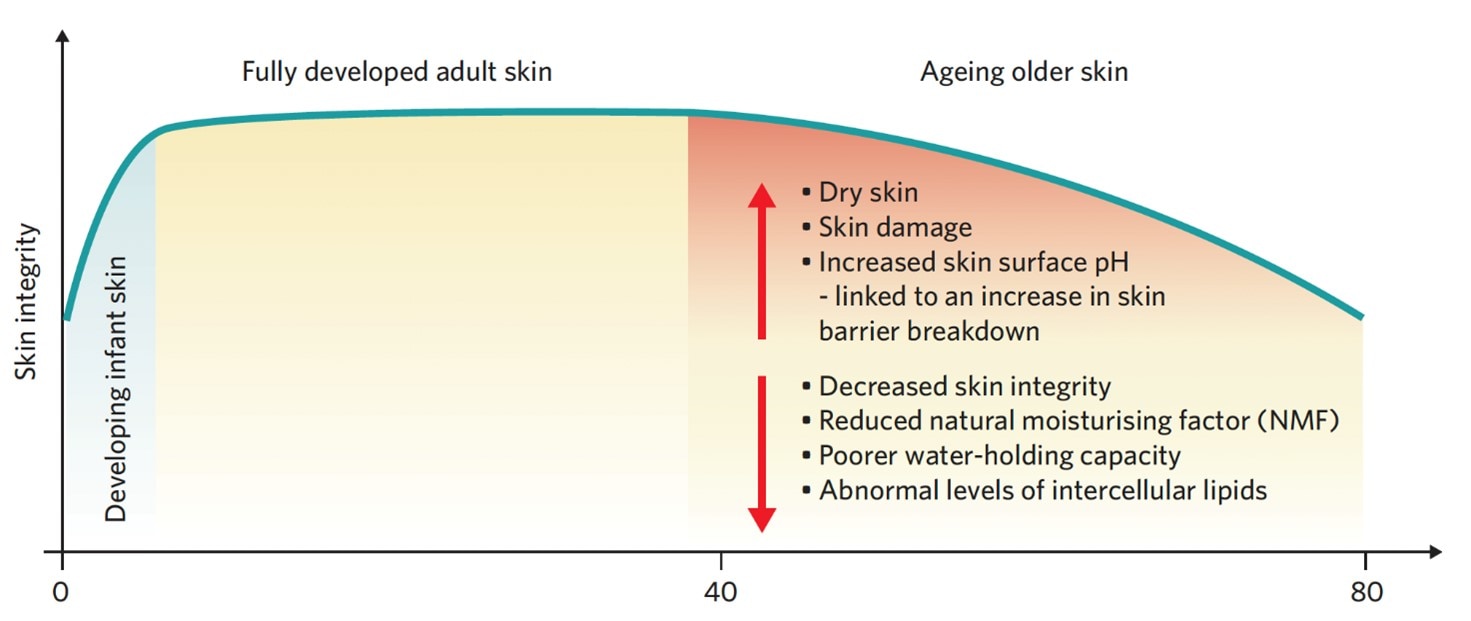
Individuals who are at risk of skin tears2
Although skin tears are the most common wound amongst elderly patients, there are several patient groups with vulnerable skin, including:
- individuals with mobility issues or paralysis
- children and neonates
- bariatric patients
- oncology patients
- individuals with spina bifida and cerebral palsy
How do I prevent skin tears in my patient?
To prevent your patient from getting a skin tear, you can take two steps. One, find out if your patient is at risk. And two, take steps to minimise your patient’s risk. Let’s look at two tools that can help you to do this.
Tool #1: The Skin Tear Risk Assessment Protocol
To find out if your patient is at risk, you can use the Skin Tear Risk Assessment Protocol (See Figure 2).1
This protocol looks at three main risk factors:
- skin,
- mobility, and
- general health.
Figure 2: Skin Tear Risk Assessment Protocol1
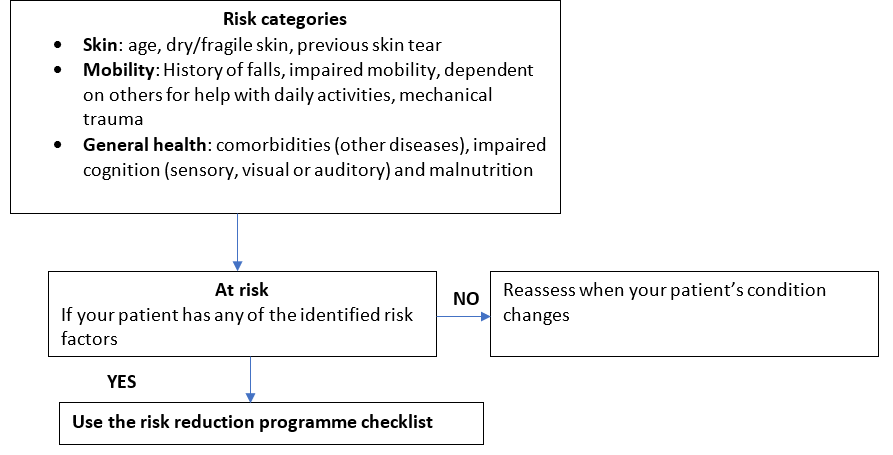
Tool #2: The Risk Reduction Programme Checklist
If you find out that your patient is at risk, use the Risk Reduction Programme Checklist (See Table 2). This will help you protect your patient from skin tears. The checklist gives you a list of tips and suggestions based on the same three factors as the risk assessment: skin, mobility, and general health. By controlling the risk factors around your patient, you can help them maintain skin health and avoid injury.1
Did you know?
Using emollients promotes general skin health. Studies have shown that by applying an emollient twice a day, you can reduce the incidence of skin tears by 50%.1
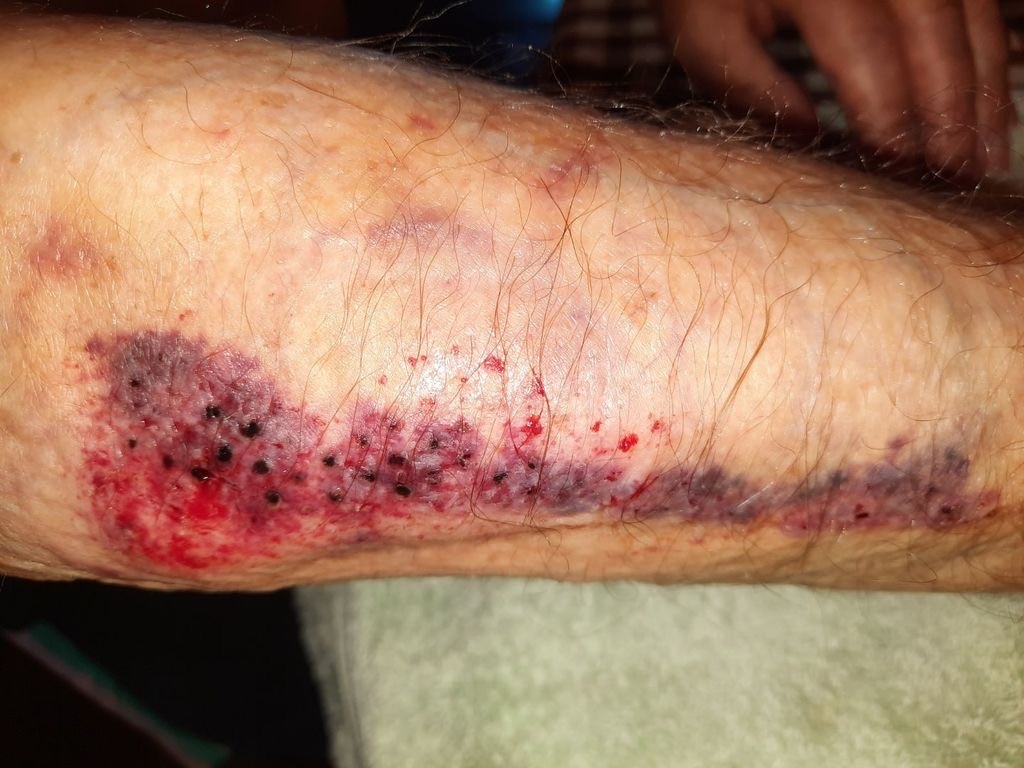
Take a holistic approach to risk assessment
When you assess your patient, it’s important to consider the patient’s entire situation, including their complete medical history, mobility, nutritional status, economic and social factors. We call this the holistic approach to assessment. One tool that can help you do that is The Triangle of Wound Assessment. You can read more about this tool and how to use it here.
Risk reduction programme checklist
Risk factor: Skin
What you should do:
- Assess the skin and find out if the patient has had skin tears in the past.
- If your patient has dry, fragile, or vulnerable skin, assess the risk of accidental trauma.
- Manage dry skin and use emollient to rehydrate the skin.
- Create an individualised skincare plan using a skin-friendly cleanser (not traditional soap) and warm (not hot) water.
- Use silicone tape and cohesive retention bandages to Prevent skin trauma from adhesives, dressings, and tapes.
- Consider medications that may directly affect the skin (e.g. topical and systemic steroids)
- Be aware of increased risk to due age extremes (e.g. very young or elderly)
- Talk about using protective clothing (e.g. shin guards, long sleeves or retention bandages)
Avoid sharp fingernails or jewelry when you’re in contact with your patient.
Risk factor: Mobility
- Encourage your patient to be active and exercise
- Avoid friction and shearing when you’re moving the patient.
- Use good manual handling techniques (check your local guidelines)
- Conduct a falls risk assessment
- Make sure your patient wears sensible/comfortable shoes
- Carefully put on clothing and compression garments
- Make sure the environment is safe (e.g. remove any obstacles that the patient could trip over or run into)
- Use padding for equipment and furniture
Assess for potential skin damage from pets.
Risk factor: General health
- Teach the patient and carers about how to prevent skin tears
- Actively involve the patient and carers in decisions
- Optimise nutrition and hydration (refer to a dietician if needed)
- Refer to an appropriate specialist if the patient has problems with sensory perception (e.g. diabetes)
Consider how medication and polypharmacy might affect the patient’s skin.
For more information on how to avoid skin injuries in bedbound patients, read this article
References
- ISTAP Best Practice Recommendations for the Prevention and Management of Skin Tears in Aged Skin 2018
- ISTAP Best Practice Recommendations for Holistic Strategies to Promote and Maintain Skin Integrity 2020
You may also be interested in…
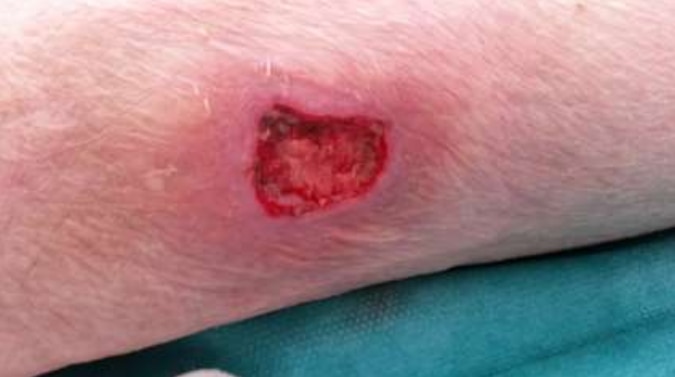
Patient case video
Watch how a traumatic wound was managed with a hydrocolloid dressing.
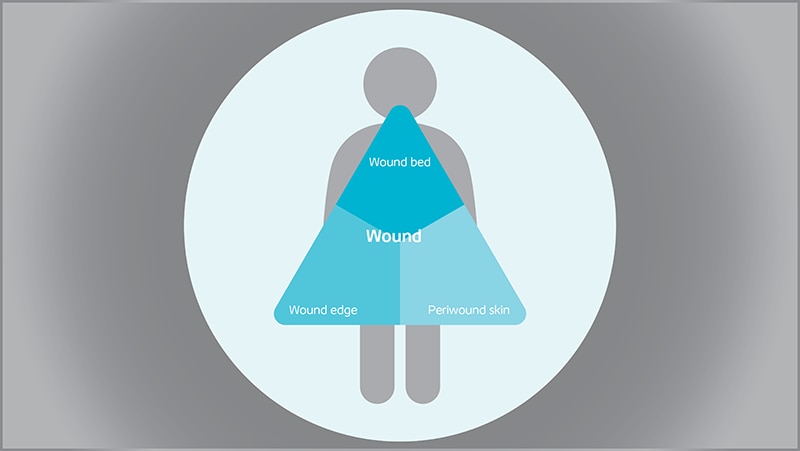
Triangle of Wound Assessment
Conduct a holistic and systematic wound assessment with our tool.

